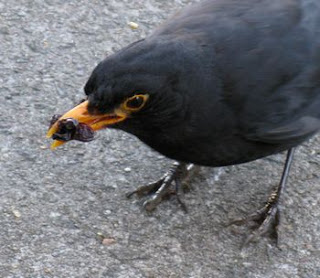Butterwort normally has only one flower on each stalk, but this one had two. The two stems are joined at the bottom right corner of the picture.
 In April I found a Fritillary in our garden that had done the same thing.
In April I found a Fritillary in our garden that had done the same thing. Two weeks ago Fred bought me a bunch of flowers, but it was only after several days that I noticed this double-headed Gerbera among them.
Two weeks ago Fred bought me a bunch of flowers, but it was only after several days that I noticed this double-headed Gerbera among them. Last Friday I was doing an orchid survey and discovered this Heath Spotted Orchid which appears to be opening its buds from the top of the spike downward - the opposite direction to the normal.
Last Friday I was doing an orchid survey and discovered this Heath Spotted Orchid which appears to be opening its buds from the top of the spike downward - the opposite direction to the normal. For more abnormal plants we have found, see Botanical abnormalities
For more abnormal plants we have found, see Botanical abnormalities

































